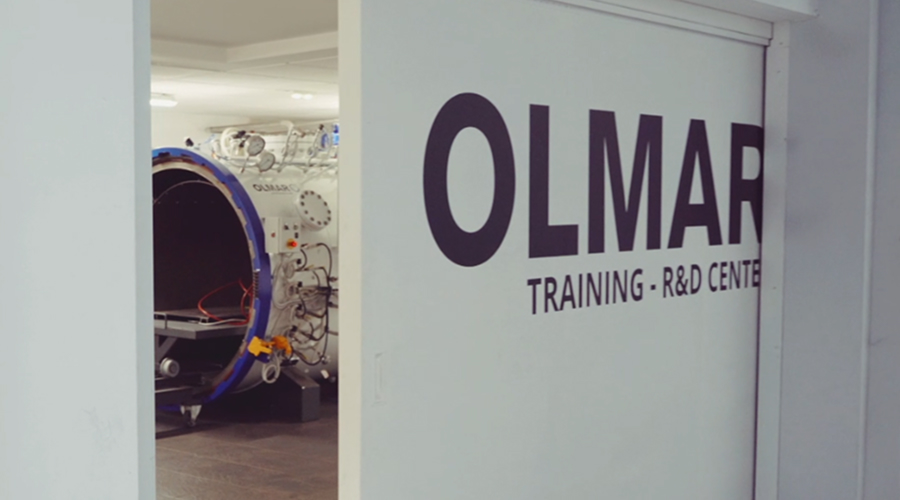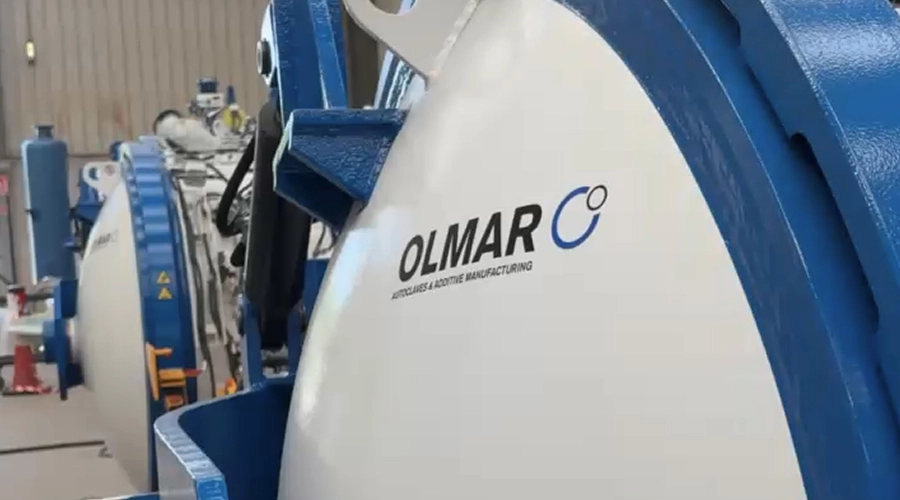A gateway to innovation in composites
Autoclaves play a central role in the development and processing of advanced composite materials with a new generation of engineers at the forefront of technology.
In universities, where research, education, and innovation converge, autoclave systems provide an essential platform for producing high-quality composites with superior mechanical and thermal properties.
Autoclaves serve as both practical tools for producing high-quality composites and as research platforms for innovation in materials and processes. Their applications range from student training to advanced material development, while their future points toward sustainability, digital integration, and broader accessibility. As the demand for lightweight, high-performance, and environmentally responsible materials grows, autoclaves in academic settings will continue to play a pivotal role in preparing students and researchers to shape the future of composite manufacturing.
An R&D environment combined with the demand of lightweight, sustainable, and high-performance composites, has made Olmar expand its presence in educational institutions innovating with their autoclaves ATC3 several universities and R&D centers worldwide.
Olmar autoclaves ATC3 are supporting an incredible collaborative ecosystem with new and upcoming challenges for composite materials.
Their use extends far beyond manufacturing; they serve as tools for research into new materials, process optimization, and training the next generation of engineers and scientists.
Among others, CERN, Lucideon, National Graphene Institute at the University of Manchester, Ramaiah University of Applied Sciences, TU Dublin, Budapest University, Nottingham University, Airbus R&D, etc… have trusted Olmar for their Autoclaves supply.
Understanding their applications today, as well as their trajectory for the future, sheds light on how universities and R&D centers are preparing to meet the increasing global demand for advanced composites.
Applications in Universities and R&D Centers
Educational Training
One of the most important roles of the autoclave in universities is as a training tool for students. Engineering and materials science programs can provide hands-on experience with autoclave curing, giving students a practical understanding of how pressure, temperature, and vacuum interact to determine the quality of composite laminates. This exposure prepares graduates for careers in industries where autoclave processing remains the benchmark for high-performance materials.
Material Development and Characterization
One of the primary applications of autoclaves in academic settings is the fabrication of fiber-reinforced polymer composites, such as carbon fiber/epoxy laminates. These materials are widely used in aerospace, automotive, renewable energy, and sporting goods industries due to their excellent strength-to-weight ratios.
In university laboratories, students and researchers rely on autoclaves to replicate the industrial processes used to cure these materials, thereby gaining practical exposure to technologies that are standard in high-performance manufacturing.
Autoclaves in universities are also used to investigate the effects of different curing parameters on carbon fiber properties. Variables such as temperature, pressure, and time can significantly affect resin crosslinking, void content, and overall structural performance. By conducting controlled experiments, students learn how to optimize processing conditions for different applications. For example, aerospace-related research often focuses on minimizing porosity to achieve maximum reliability, while renewable energy research may emphasize cost reduction and scalability.
Prototype Manufacturing
Another key role of autoclaves is in prototyping and material development. University researchers frequently work with novel resins, fibers, or hybrid reinforcements, testing how they perform under autoclave curing conditions. This experimental freedom allows universities to contribute directly to material innovation, from bio-based resins for sustainability to next-generation thermoplastics with recyclability in mind.
Because autoclaves provide consistent and controllable environments, they enable reliable comparison across experimental studies, accelerating material science advancements.
Researchers developing drones, lightweight automotive structures, or medical devices can use the ATC3 Compact to manufacture parts with aerospace-grade quality. The ability to produce prototypes in-house accelerates the innovation cycle and reduces dependence on external manufacturing facilities.
Process Optimization
Beyond material research, universities also use their autoclaves to experiment with new process strategies. Shorter curing cycles, reduced energy consumption, or hybrid processing methods (such as combining autoclave curing with out-of-autoclave techniques) can all be investigated. This makes the autoclave not just a piece of equipment, but a research platform for developing the future of composite processing.
OLMAR ATC3 Compact Autoclave | The Smart Autoclave for Universities and R&D Centers
The use of autoclaves for the curing of composite materials has become indispensable in industries such as aerospace, automotive, and renewable energy.
However, universities and research centers, where space, budget, and operational flexibility are often limited, require equipment that is versatile, compact, and cost-efficient. The autoclave ATC3 developed by Olmar responds precisely to these needs, offering an ideal platform for research, prototyping, and advanced training. Its presence in R&D environments not only accelerates innovation in composite materials but also bridges the gap between academic study and industrial applications.
The ATC3 (Compact autoclave system) is designed to bring industrial-grade composite curing technology into research labs, universities, and innovation centers. With a compact footprint and advanced control systems, it enables cutting-edge research, education, and prototype manufacturing without the space and cost demands of large industrial autoclaves.
Traditional industrial autoclaves are often designed for large-scale production, which makes them less suitable for research settings where smaller part sizes, experimental freedom, and rapid setup changes are required. The autoclave ATC3 addresses these challenges by providing a scaled-down but technologically advanced system that maintains all the essential capabilities of full-sized autoclaves.
This design enables research groups to reproduce the curing processes used in aerospace or automotive industries, ensuring that experimental results are directly transferable to industrial contexts. The flexibility of the ATC3 Compact makes it ideal for testing new resin systems, fiber reinforcements, hybrid composites, and even thermoplastic matrices under carefully controlled curing cycles.
Main advantages of the ATC3 Compact
The Autoclave ATC3 Compact plant provides several features that make it particularly attractive for academic and R&D settings:
- Compact footprint: Designed to fit in laboratories and smaller facilities without the need for extensive infrastructure.
- Advanced control systems: Allows precise programming of temperature and pressure cycles, enabling complex research experiments
- Safety and reliability: Incorporates the latest safety standards as larger autoclaves, ensuring secure operation for students and researchers.
- Unique price performance: More affordable than large industrial autoclaves, making it accessible for academic institutions with limited budgets.
- Scalability: Provides a bridge between laboratory-scale research and industrial-scale production, making it easier to transfer findings to real applications.
As the demand for lightweight, sustainable, and high-performance composites grows, the role of universities and R&D centers will become even more critical. Equipment like Olmar’s Autoclave ATC3 ensures that these institutions are not limited by space or resources. In the future, such systems may be coupled with digital monitoring tools, allowing real-time data acquisition for advanced process modeling and simulation.
Moreover, Olmar autoclaves align with global trends in education and research: sustainability, digitalization, and interdisciplinary collaboration. Whether it is used to test eco-friendly resins, validate digital twin simulations, or manufacture prototypes for next-generation transportation, its presence in academic labs will continue to shape the future of composites.
The ATC3 Compact from Olmar is far more than a small-scale autoclave—it is a powerful enabler of education, research, and innovation. In universities, it trains the engineers of tomorrow.
In R&D centers, it accelerates breakthroughs in materials and processes.
With its compact design, precision control, and cost-effective operation, it provides a vital link between academia and industry, ensuring that the next generation of composite materials and technologies can be explored, tested, and brought to reality.
Industrial applications
Olmar autoclaves are designed not only for research and education but also for the production of small, high-performance composite parts.
By offering industrial-grade curing in a reduced and cost-effective format, these systems are particularly well suited for sectors where precision, material integrity, and repeatability are critical:
Aerospace Components
Small but complex composite parts in the aerospace industry demand maximum reliability.
- industrial applications: These require exceptional strength-to-weight ratios and flawless surface quality. The ATC3 Compact autoclave enables controlled curing cycles that minimize voids and porosity, ensuring safety and performance.
- Structural brackets, ducts, and housings: Lightweight secondary structures benefit from autoclave curing to achieve tight tolerances and durability.
- Prototype aircraft components: Universities and R&D centers can fabricate small-scale aerospace parts for validation before scaling to industrial production.
Automotive Industry
The push for lighter vehicles and sustainable mobility is driving the use of composites in cars, motorcycles, and even electric scooters.
- Motorcycle or small vehicle blades and aerodynamic parts: Autoclave curing guarantees the stiffness and fatigue resistance needed for dynamic performance.
- Interior and structural inserts: Components such as seat supports or reinforcement panels can be manufactured in small batches with consistent quality.
- Prototype electric vehicle (EV) parts: The ATC Compact enables rapid prototyping of composite housings, covers, and supports, accelerating innovation cycles.
Energy and Renewables
Composite technology plays a key role in energy efficiency, especially in small-scale renewable applications.
- Turbine blades (small-scale models or micro-turbines): The ATC Compact allows precise curing of complex blade geometries, ensuring uniform strength.
- Protective casings and housings for electronics: Essential for offshore wind, wave energy, or solar equipment where environmental resistance is critical.
- Fuel cell and battery casings: Lightweight and chemically resistant composites cured in autoclaves improve safety and energy density..
Medical and Sports Equipment
The demand for lightweight, ergonomic, and durable parts makes autoclave composites attractive in health and performance sectors.
- Prosthetics and orthotic components: Precision curing ensures repeatability and comfort while reducing weight..
- Precision curing ensures repeatability and comfort while reducing weight.: Small parts such as racket frames, paddles, and protective gear benefit from autoclave-grade finishes.
- Medical device housings: Autoclaves enable production of strong, sterilizable components.
Research Prototyping and Advanced Applications
The ATC Compact is not only a production tool but also an experimental platform for new designs.
- Scale models for aerospace testing: Universities can create scaled winglets, fuselage elements, or rotors to validate aerodynamic and structural concepts..
- Hybrid materials: Small parts using carbon, glass, or even natural fibers can be tested for strength, sustainability, and recyclability.
- Rapid prototyping: Start-ups and research labs can quickly move from digital design to physical part production.


